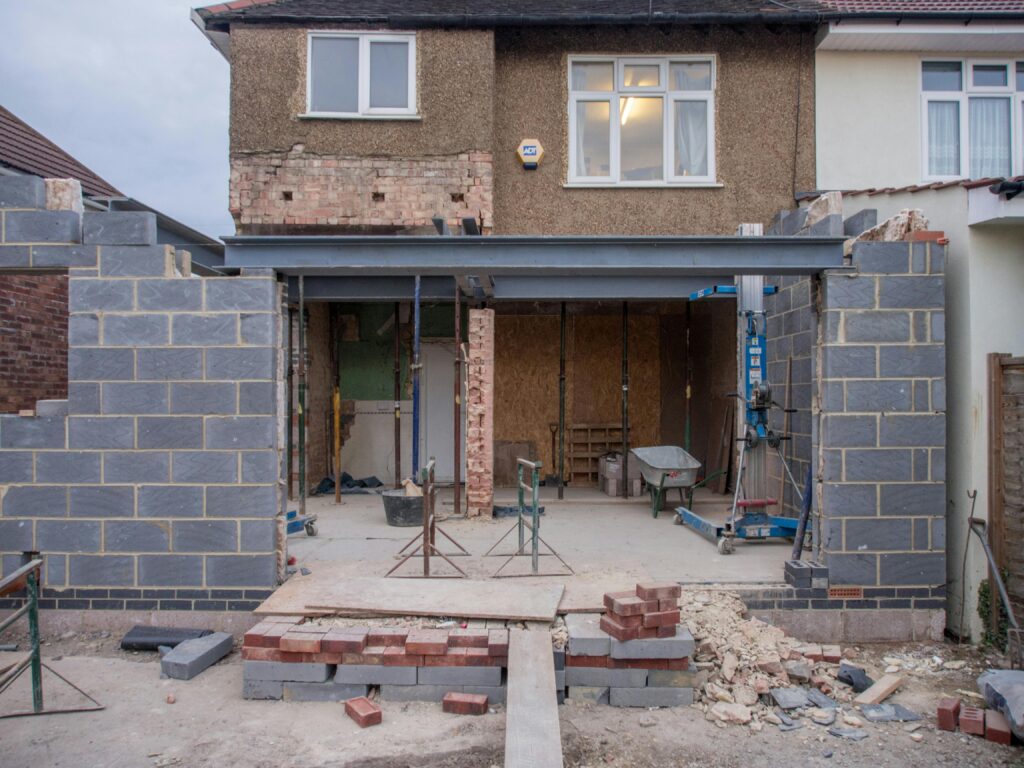Expanding your home with an extension is a great way to add space and increase property value. However, understanding the costs involved is crucial for budgeting effectively. In this guide, we’ll break down the costs of house extensions in the UK for 2025, including factors that influence pricing and tips for keeping expenses under control.
Average Cost of a House Extension in the UK
The cost of a house extension varies depending on size, complexity, and location. Below is a general estimate for different types of extensions:
- Single-storey extension: £1,500 – £2,500 per m²
- Double-storey extension: £1,500 – £2,200 per m² (cheaper per m² than a single-storey)
- Kitchen extension: £1,800 – £3,000 per m²
- Loft conversion: £30,000 – £60,000 total
- Garage conversion: £5,000 – £20,000 total
For a typical 20m² single-storey extension, you can expect to pay between £30,000 and £50,000, excluding VAT and additional costs.
Factors That Affect the Cost of an Extension
Several factors can impact the final cost of your house extension:
1. Size and Design Complexity
- Larger and more complex designs require more materials and labour, increasing the cost.
2. Location
- Prices are higher in London and the South East compared to other regions in the UK.
3. Quality of Materials
- Standard materials cost less than premium options like high-end glass, steel, or bespoke fittings.
4. Planning Permission & Regulations
- Some extensions require planning permission, adding extra costs for applications and architectural fees.
5. Labour Costs
- Hiring skilled tradespeople such as electricians and plumbers will add to your overall expenses.
Additional Costs to Consider
- Architectural drawings: £2,000 – £5,000
- Planning permission (if required): £206
- Structural engineer: £500 – £2,000
- Building control & inspections: £750 – £1,500
- VAT (if applicable): 20% on labour and materials
How to Save Money on Your House Extension
- Stick to simple designs – Complex designs increase labour and material costs.
- Use cost-effective materials – Opt for mid-range materials that balance durability and affordability.
- Get multiple quotes – Compare builders to ensure you get a fair price.
- Consider a project manager – Managing the project yourself can save on professional fees.
- Plan ahead – Avoid changes mid-project, as they can cause delays and additional expenses.
Step-by-Step Process of Building a House Extension
1. Initial Planning and Design
- Determine the purpose of your extension.
- Create a preliminary design concept.
- Research local planning requirements.
2. Hiring Professionals
- Consult an architect for design plans.
- Obtain quotes from multiple contractors.
- Hire a project manager if necessary.
3. Securing Permissions and Approvals
- Submit planning permission applications if required.
- Obtain building regulations approval.
4. Budgeting and Financing
- Assess costs and obtain necessary funding.
- Apply for home improvement loans if needed.
5. Construction Phase
- Groundwork and foundation preparation.
- Structural framework installation.
- Roofing, electrical, and plumbing work.
- Finishing touches such as flooring and painting.
6. Final Inspection and Approval
- Ensure all work meets building regulations.
- Obtain final certifications.
Is a House Extension Worth It?
A well-planned house extension can add significant value to your property. On average, a home extension can increase property value by 10-20%, making it a worthwhile investment. However, to maximise your return, consider the following:
- Ensure the extension complements the existing property.
- Choose designs that enhance usability and aesthetics.
- Avoid overcapitalising—compare your home’s potential value against similar properties in your area.
Common Pitfalls to Avoid
- Ignoring Planning Regulations – Always check with local authorities before starting work.
- Underestimating Costs – Factor in contingencies of at least 10-15%.
- Choosing the Wrong Contractor – Research reviews and request references before hiring.
- Skipping Inspections – Regular inspections ensure compliance and prevent costly mistakes.
- Rushing the Design Phase – Poor planning can lead to inefficiencies and unexpected costs.
Final Thoughts
Understanding the cost of a house extension in the UK is essential before starting your project. By carefully planning, budgeting, and hiring the right professionals, you can ensure your extension is completed efficiently and within budget.
Need expert guidance for your house extension? Contact Deedan Group today for a consultation and quote!


